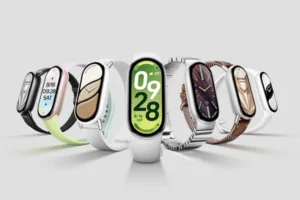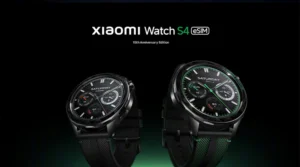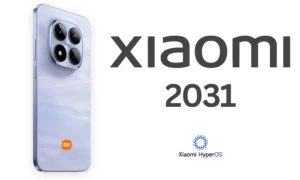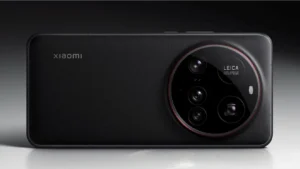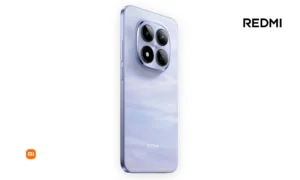Xiaomi Wearables Compared: Redmi Watch 5 vs. S4, Band 9 Pro & Watch 5 Active
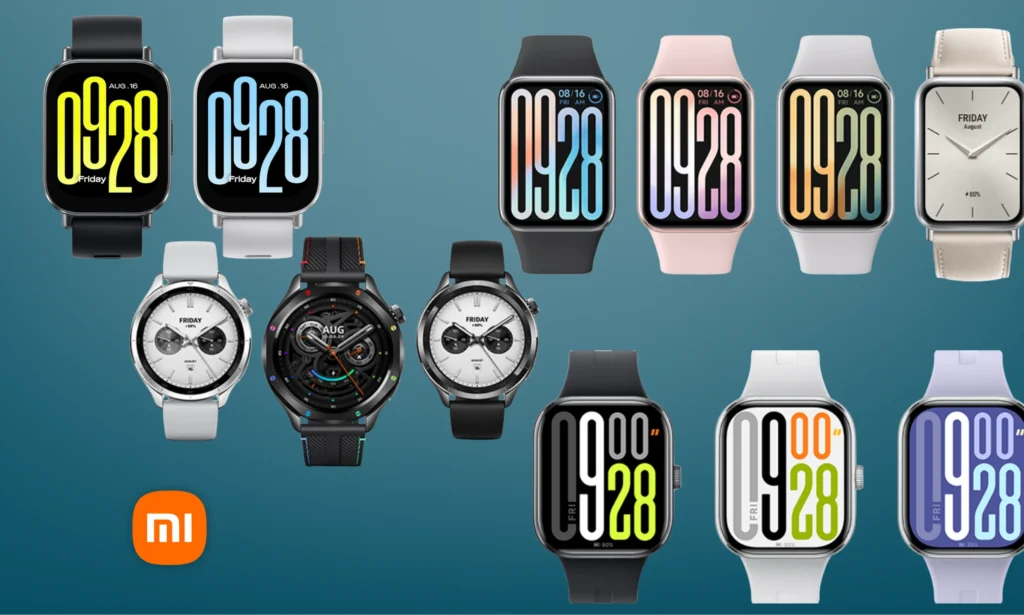
Xiaomi vs. Redmi: A Deep Dive into the Latest Wearables – Redmi Watch 5, Xiaomi Watch S4, Smart Band 9 Pro & Watch 5 Active
Hey everyone, and welcome back to xiaomiforall.com! If you’re anything like me, you’re always keeping an eye on what Xiaomi and its fantastic Redmi brand are cooking up in the wearable space. These guys have really nailed the sweet spot of offering cutting-edge tech, slick designs, and prices that don’t break the bank. Today, we’re diving headfirst into a comparison of four recently released powerhouses: the Redmi Watch 5, the more premium Xiaomi Watch S4, the compact Xiaomi Smart Band 9 Pro, and the sportier Redmi Watch 5 Active.
Each of these gadgets brings something unique to the table, from their build materials and aesthetics to their health tracking, connectivity, and battery life. So, buckle up, grab your favorite beverage, and let’s break down what makes each of these tick, so you can figure out which one is your perfect wrist companion.
1. Design and Build: Style Meets Comfort
Let’s be honest, the first thing we notice about any wearable is its looks and how it feels on our wrist. It’s not just about the style factor; comfort for all-day wear is super important. Xiaomi and Redmi have distinct approaches here, using different materials, shapes, and offering ways to personalize them.
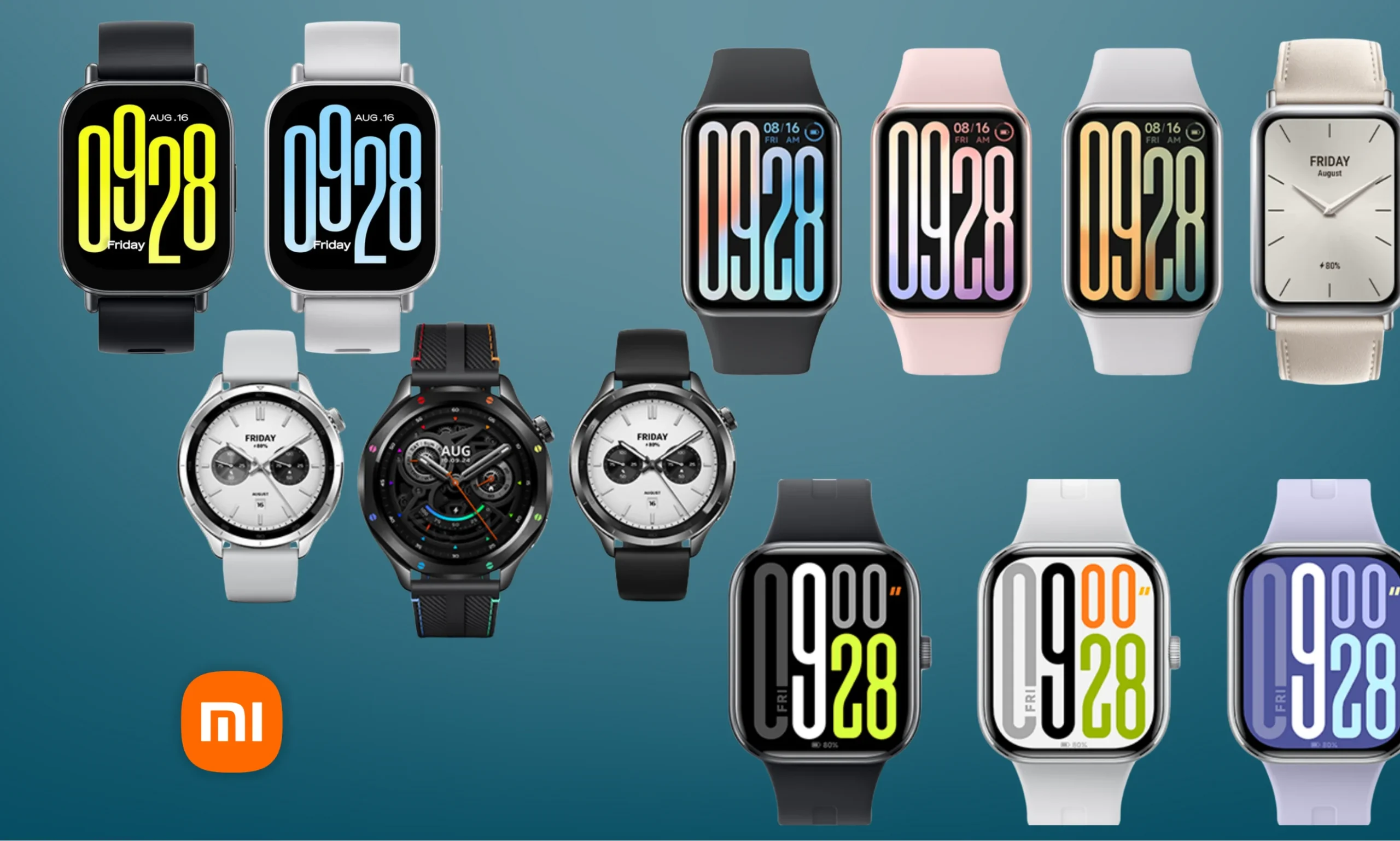
Redmi Watch 5: The Sleek All-Rounder
The Redmi Watch 5 sports a classic rectangular design with nicely rounded edges. It feels pretty good in the hand, featuring an aluminum alloy frame paired with a plastic back. Weighing in at a mere 33.5g and measuring 47.5 x 41.1 x 11.3 mm, it’s super lightweight and a breeze to wear throughout the day. Its 2.07-inch AMOLED display (432 x 514 pixels, 324 ppi) is a real treat for the eyes, offering sharp visuals and vibrant colors, which is awesome for checking notifications or your workout stats at a glance. You can easily swap out the silicone strap, and its unisex design means it’ll look good on pretty much anyone. Many users rave about how comfortable it is for 24/7 wear, though a few have mentioned that the plastic finish, while durable, might not feel as “premium” as some other materials.
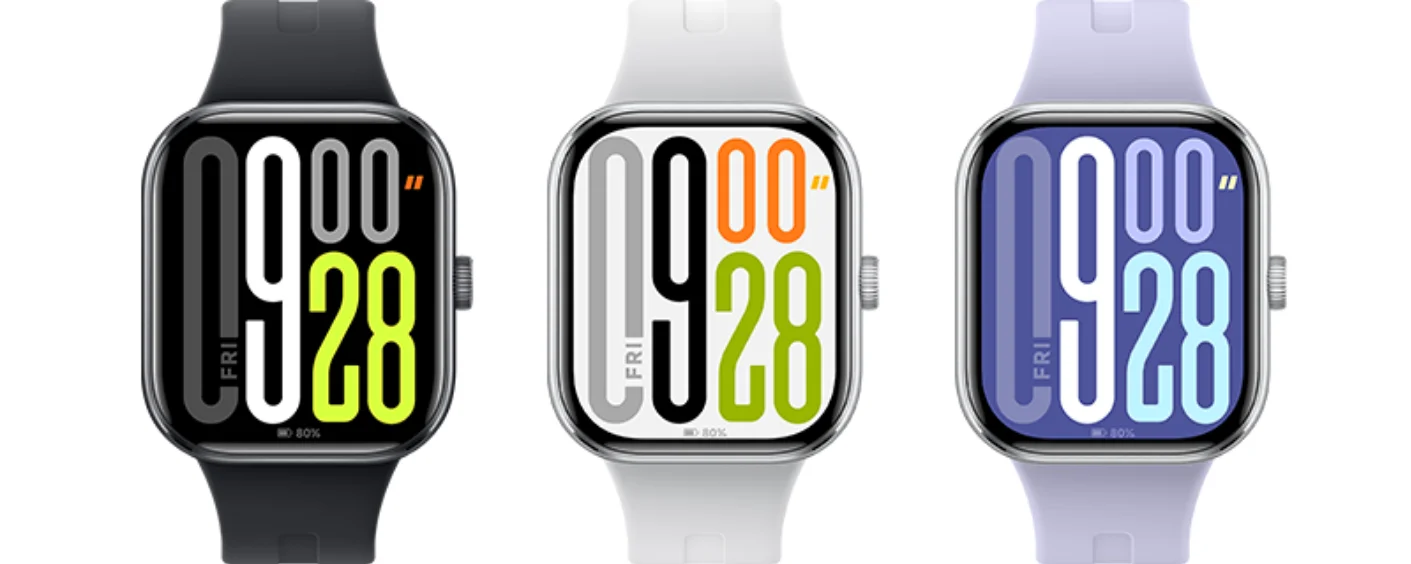
Xiaomi Watch S4: Classic Elegance
Now, if you’re leaning towards a more traditional watch aesthetic, the Xiaomi Watch S4 is your jam. It rocks a classic circular design, aiming to mimic the look and feel of a classic timepiece. The build here is a step up, combining an aluminum alloy case with a stainless steel bezel and Corning glass. It’s a bit heftier at 44.5g and measures 47.3 x 47.3 x 12 mm, making it feel more substantial.
The 1.43-inch AMOLED display is smaller than the Redmi Watch 5’s, but its circular shape and the option for interchangeable bezels give it a more sophisticated vibe, perfect for dressing up or wearing to the office. You also get a satisfyingly clicky rotating crown and a side button for navigation, which many find super intuitive. People love its robust build quality, but if you’re someone who prioritizes feather-light comfort above all else, the S4’s weight might be something to consider.
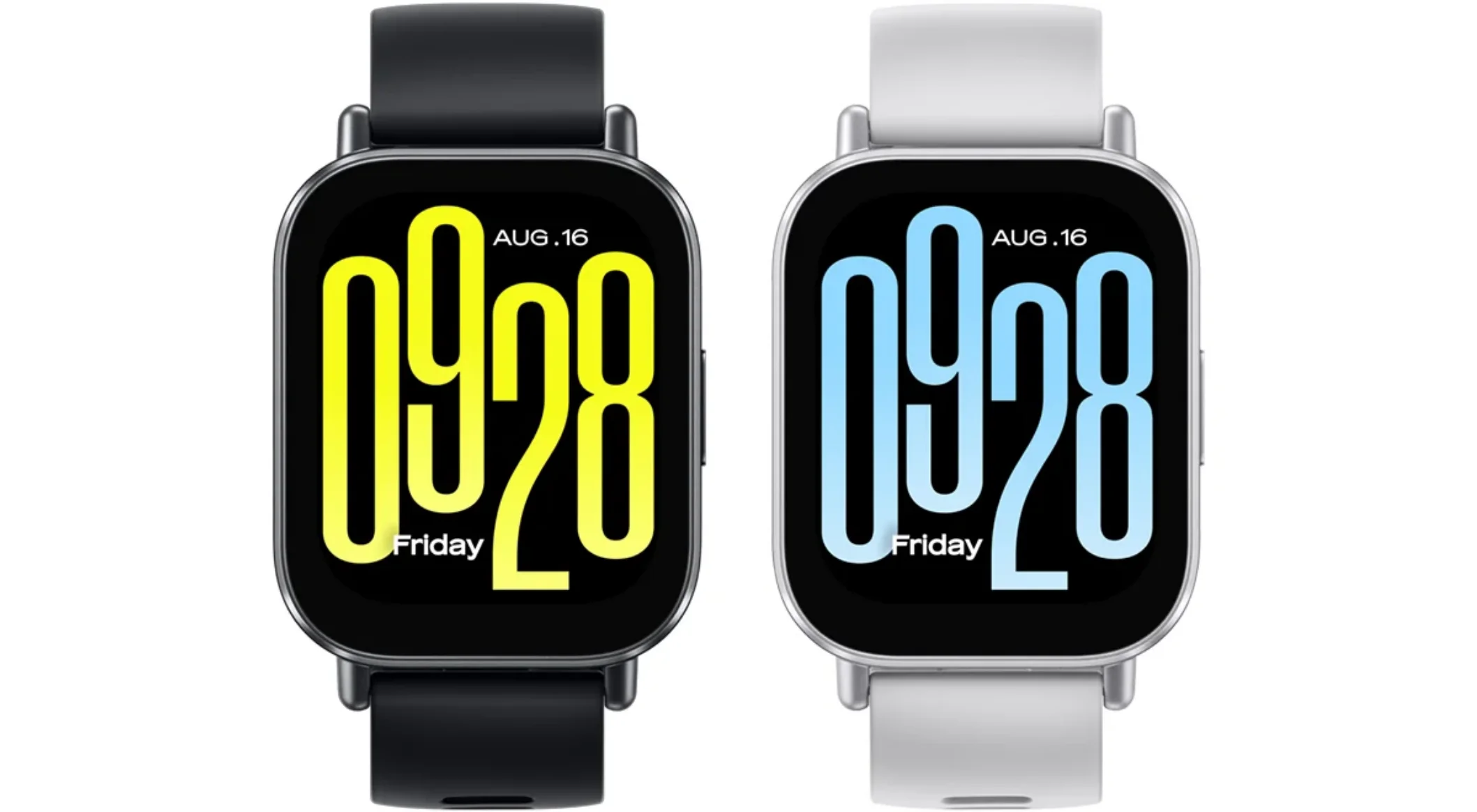
Xiaomi Smart Band 9 Pro: The Minimalist’s Choice
As a smart band, the Smart Band 9 Pro goes for a more compact and understated look. It’s seriously light, tipping the scales at around 24.5g (without the strap), and its dimensions are 46.6 x 26.3 x 10.3 mm. The 1.74-inch AMOLED display is a nice upgrade from previous Smart Band models, offering a good balance between size and usability. It’s larger than what you’d typically find on a band, but still smaller than the watches. The reinforced polymer construction is tough and light, making it ideal for active lifestyles. The silicone strap is easily swappable, and its slim profile means it’s perfect for those who prefer something subtle and unobtrusive. The main trade-off here is that the band format inherently limits the amount of information you can display at once compared to a watch.
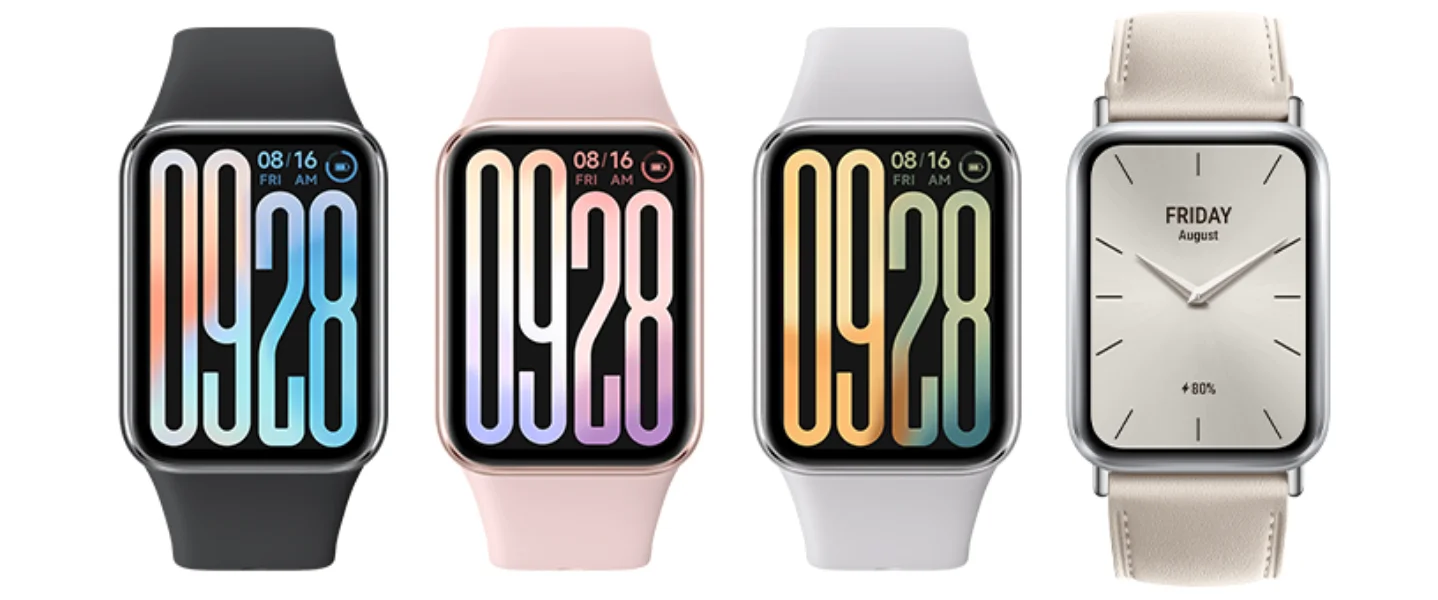
Redmi Watch 5 Active: Built for Action
The Redmi Watch 5 Active shares the rectangular form factor with its sibling, the Redmi Watch 5, but it’s clearly geared towards a more athletic audience. It’s a little bigger and heavier, at 42.2g and 49.1 x 40.4 x 11.4 mm. The biggest difference, however, is its screen. It sports a 2.0-inch TFT display which, frankly, doesn’t quite match the crispness and vibrancy of the AMOLED screens on the other devices. While it’s functional, the visual experience isn’t as dazzling. The aluminum casing and interchangeable silicone strap are durable, but the overall design feels less polished than the Xiaomi Watch S4. Users appreciate its ruggedness, but the screen’s lower quality, especially in bright sunlight, is a frequent point of criticism.
So, the lowdown on design? The Xiaomi Watch S4 is the king of premium feel and versatility for any occasion. The Redmi Watch 5 and the Smart Band 9 Pro are champions of everyday comfort and lightness. The Redmi Watch 5 Active is tough and ready for action, but it definitely takes a backseat in screen quality and overall aesthetic refinement.
2. Display: Clarity and Usability on Your Wrist
The screen is your window to everything happening on your wearable, so its quality is a huge deal. Thankfully, Xiaomi and Redmi have equipped these devices with some pretty advanced display tech, though there are clear differences.
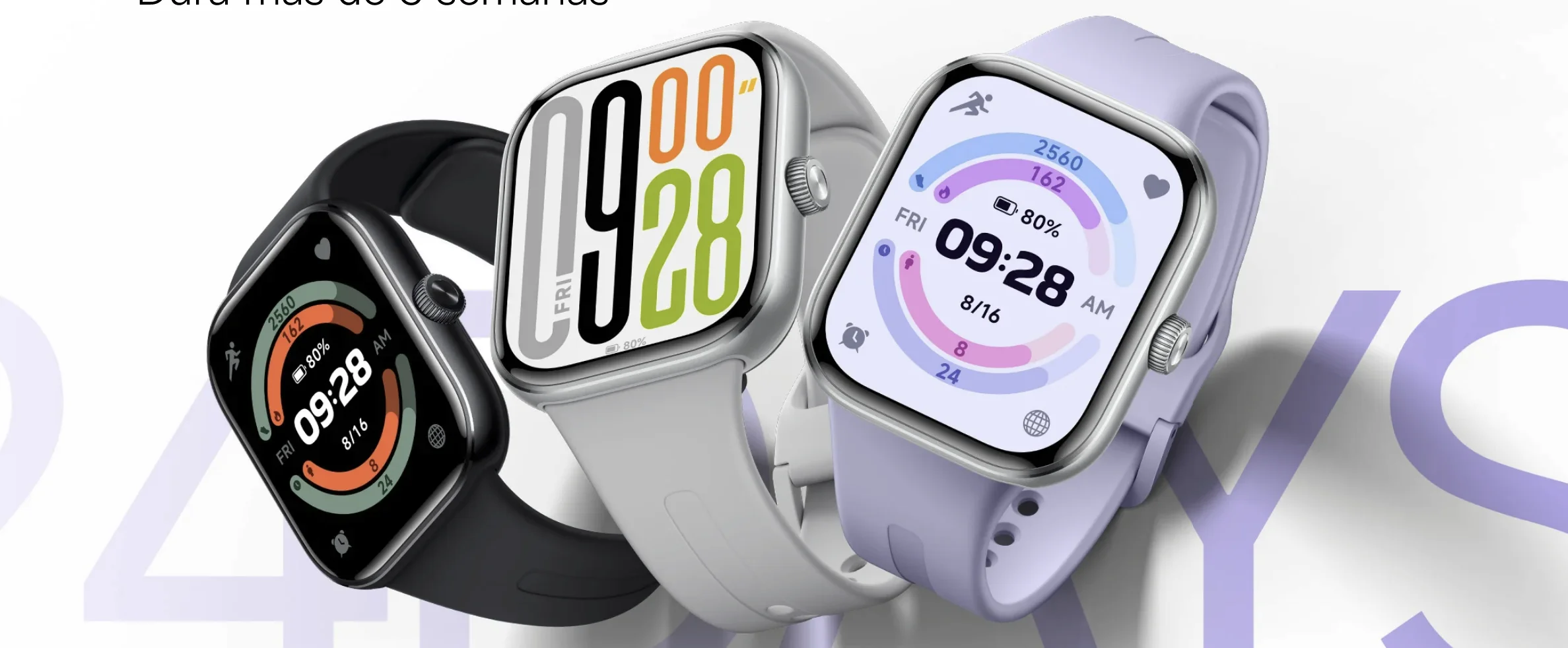
Redmi Watch 5: Big and Bright
The Redmi Watch 5 packs a 2.07-inch AMOLED screen that can hit up to 1500 nits of brightness. This is fantastic for sunny days when you need to check your stats without squinting. With a resolution of 432 x 514 pixels, everything from text to graphics looks sharp and colorful. Its rectangular shape is also super practical, giving you more space to see notifications and all your workout data clearly.
Xiaomi Watch S4: The Brightest Star
The Xiaomi Watch S4’s 1.43-inch AMOLED display might be smaller, but it boasts a seriously impressive 2200 nits of peak brightness. This makes it the undisputed champion for outdoor visibility, even in direct sunlight. Its resolution of 466 x 466 pixels gives it a slightly higher pixel density (326 ppi), and while the smaller size means less information can be displayed at once, the overall visual experience is top-notch.
Xiaomi Smart Band 9 Pro: The Balanced Act
The Smart Band 9 Pro features a 1.74-inch AMOLED display with a resolution of 336 x 480 pixels and 1500 nits of brightness. It strikes a great balance between screen real estate and the compact nature of a band. It’s perfect for quick glances at notifications or activity stats, but navigating through more complex menus can feel a bit cramped due to its elongated shape.
Redmi Watch 5 Active: The Visual Compromise
This is where the Redmi Watch 5 Active really stumbles. Its 2.0-inch TFT display, while large, only offers 250 ppi and significantly less brightness compared to the AMOLED panels. We don’t have official peak brightness figures, but it’s safe to say it’s considerably lower. While it gets the job done, it simply can’t compete with the sharpness, color reproduction, and overall visual pop of the other devices.
The takeaway on displays? If you want the biggest screen for more information at a glance, the Redmi Watch 5 is a strong contender. For the absolute best visual quality and outdoor legibility, the Xiaomi Watch S4 takes the crown. The Smart Band 9 Pro is a solid compromise for minimalists, while the Redmi Watch 5 Active’s display is its weakest link.
3. Health and Fitness Features: Tracking Your Progress
Xiaomi and Redmi wearables are renowned for their comprehensive health and fitness tracking capabilities. All four devices offer the essentials like heart rate monitoring, blood oxygen (SpO2) tracking, sleep monitoring, stress tracking, and even menstrual cycle tracking. However, there are subtle differences in their sensor suites and the accuracy of their readings.
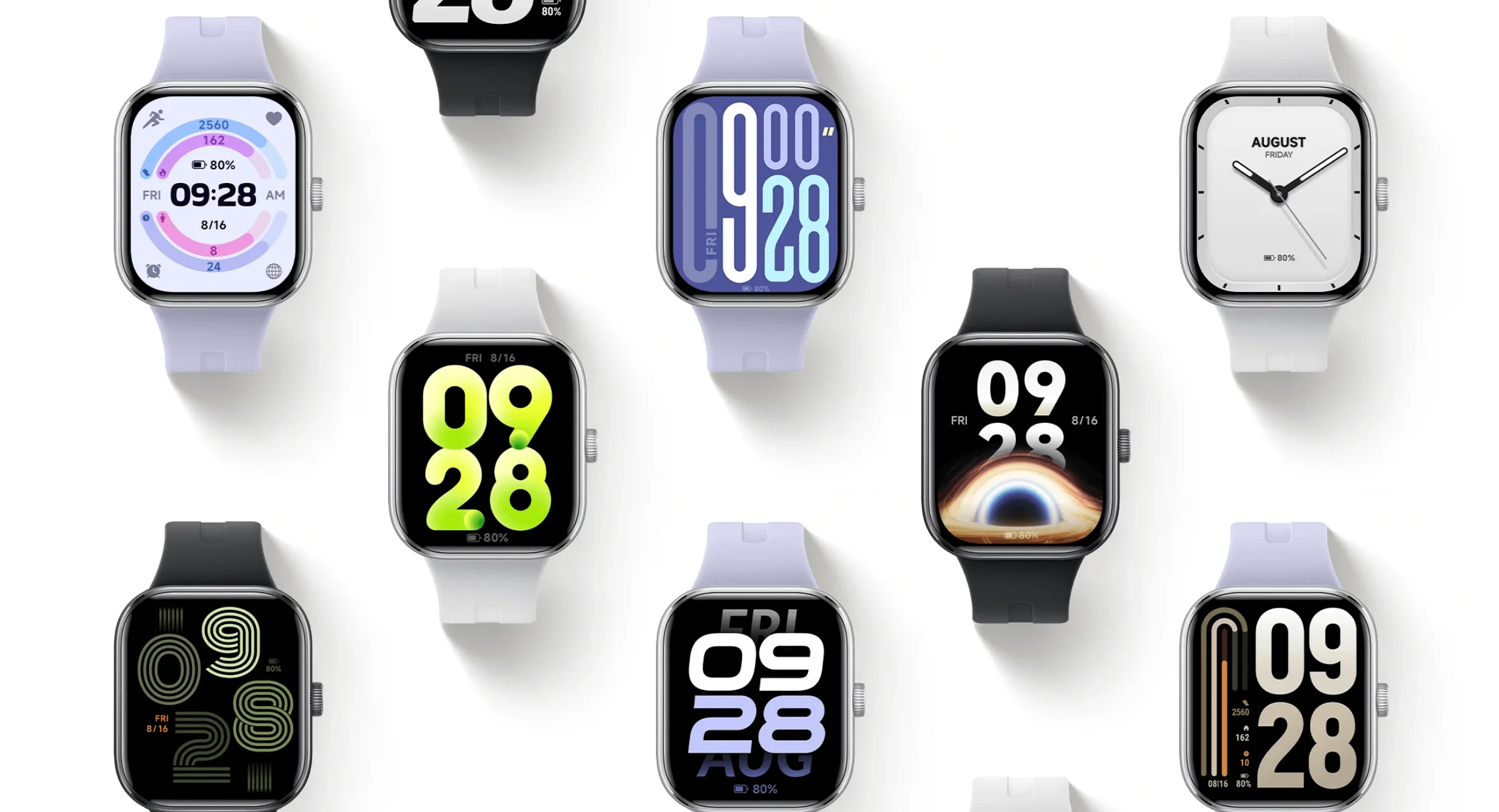
Redmi Watch 5: The Versatile Athlete
The Redmi Watch 5 comes equipped with a standard but capable set of sensors: heart rate, SpO2, accelerometer, gyroscope, compass, and ambient light sensor. It boasts an impressive 150+ sport modes, and with its 5 ATM water resistance, it’s ready for swimming. The built-in GPS is generally reliable for outdoor activities, though some users have reported occasional minor inaccuracies. Its inclusion of a food diary and multi-sport mode makes it a pretty versatile companion for active folks.
Xiaomi Watch S4: The Data Powerhouse
Stepping up the game, the Xiaomi Watch S4 includes all the standard sensors plus a barometer, temperature sensor, and geomagnetic sensor. These additions are great for more accurate altitude tracking and better orientation during outdoor adventures. Its dual-band GPS (L1+L5) is a significant advantage, offering superior accuracy for runners, hikers, and cyclists. It even throws in VO2 max estimation and fall detection, which are features usually found on much pricier devices. However, a few reviews mention that its heart rate monitor might falter a bit during very intense workouts.
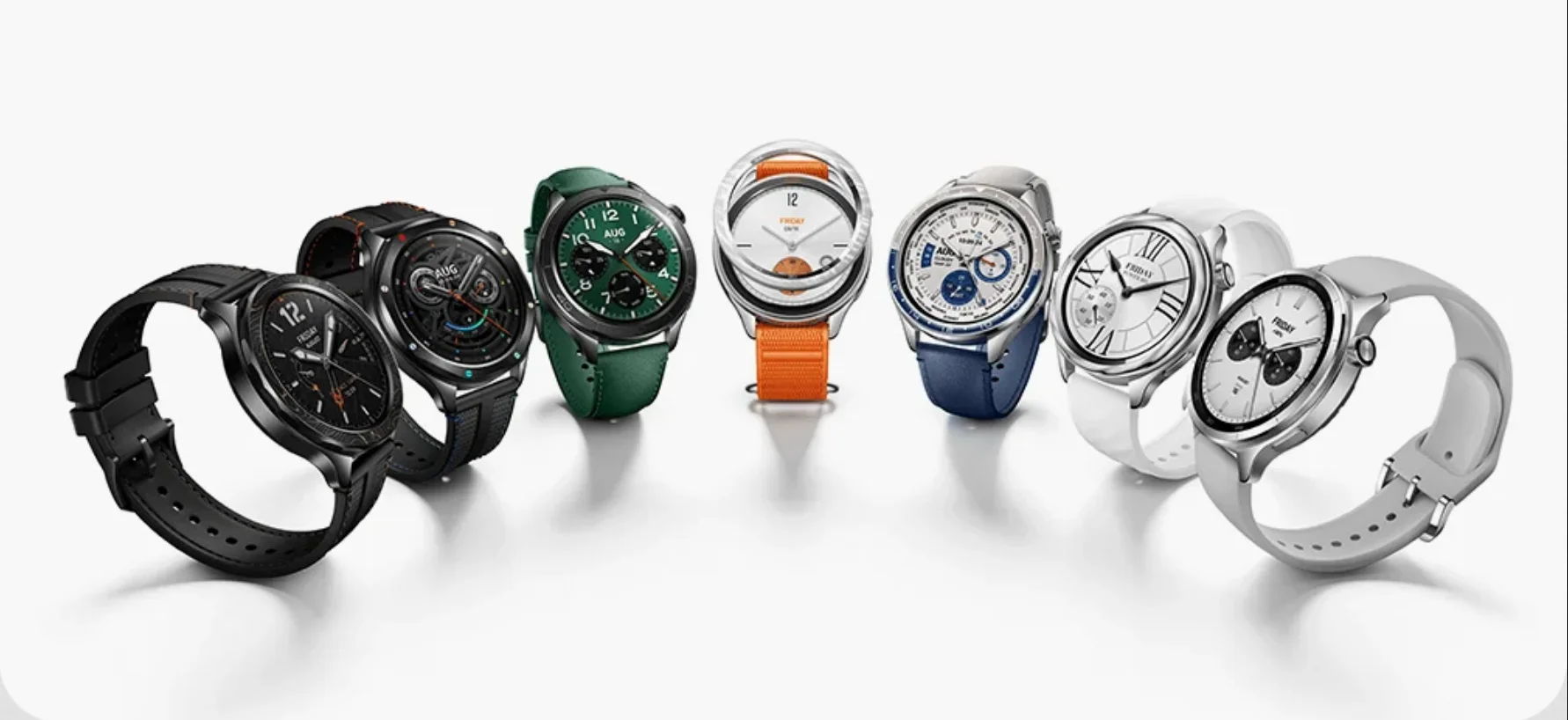
Xiaomi Smart Band 9 Pro: The Smart Tracker
The Smart Band 9 Pro is packed with the core sensors: heart rate, SpO2, accelerometer, and gyroscope. It also offers a commendable 150+ sport modes. A big step up for the Smart Band series is the inclusion of built-in GPS, which is great for tracking outdoor activities without needing your phone. While it’s not as precise as the dual-band GPS on the Watch S4, it’s more than adequate for casual users who want to monitor their runs or walks. It’s the go-to for those who want solid basic monitoring in a compact package.
Redmi Watch 5 Active: The Functional Choice
Sensor-wise, the Redmi Watch 5 Active is pretty much on par with the other Redmi and Xiaomi offerings, featuring heart rate, SpO2, accelerometer, and gyroscope. It lacks the advanced sensors like a barometer or temperature sensor found on the Watch S4. Its GPS is functional but, again, not as cutting-edge as the S4’s. It supports a similar range of sport modes, but the software interface feels a bit less refined, which can sometimes impact the accuracy and user experience of the tracking.
In summary of health and fitness: The Xiaomi Watch S4 leads the pack with its advanced sensors and pinpoint GPS accuracy, making it the top choice for serious athletes and data enthusiasts. The Redmi Watch 5 is a fantastic all-rounder for most users, offering a great balance of features. The Smart Band 9 Pro is excellent for casual fitness tracking, especially with its new GPS. The Redmi Watch 5 Active is capable, but its less sophisticated software and screen hold it back from competing at the highest level.
4. Battery Life and Charging: Staying Powered Up
Battery life is a massive factor for wearables, especially if you hate the idea of constantly charging your device. These gadgets offer pretty respectable endurance, but there are some notable differences.
Redmi Watch 5: The Marathon Runner
With a substantial 550 mAh battery, the Redmi Watch 5 claims up to 24 days of typical use, though real-world usage seems to hover around 18 days in most reviews. Even with heavy use (think always-on display and constant GPS), you can expect a solid 12 days. It charges magnetically, which is convenient and quick.
Xiaomi Watch S4: Premium Features, Shorter Stays
The Xiaomi Watch S4 packs a 486 mAh battery, offering up to 15 days of typical use. However, with its more advanced features like Wi-Fi and the optional eSIM, heavy users might see that drop to around 5 days. The real win here is its wireless charging capability, which is a pretty neat trick in this price bracket.
Xiaomi Smart Band 9 Pro: Efficient and Compact
The Smart Band 9 Pro, with its smaller profile, has an estimated 300 mAh battery (Xiaomi hasn’t officially confirmed this capacity). Despite its size, it delivers impressive endurance, rated for up to 14 days of typical use. It’s a testament to the efficiency of its display and software. Charging is done via a magnetic pogo-pin connector.
Redmi Watch 5 Active: Solid Endurance
The Redmi Watch 5 Active comes with a 470 mAh battery, promising up to 18 days of typical use. When you push it with more demanding features, this drops to around 10 days. Like its Redmi sibling, it utilizes magnetic charging.
Battery life comparison: The Redmi Watch 5 truly shines here, offering the best endurance for those who want to forget about charging for weeks. The Xiaomi Watch S4’s battery life is decent, but its advanced features demand more power; the wireless charging is a definite perk. Both the Smart Band 9 Pro and the Redmi Watch 5 Active offer solid battery performance, but they don’t quite reach the exceptional longevity of the Redmi Watch 5.
5. Connectivity and Software: Staying Connected
All these devices run on HyperOS, which is Xiaomi’s latest operating system for wearables. This ensures a smooth and integrated experience with both Android and iOS smartphones.
Redmi Watch 5: Connected Essentials
The Redmi Watch 5 features Bluetooth 5.3 for a stable connection, along with GPS support (including GLONASS, Galileo, and QZSS). It also includes a microphone and speaker, allowing you to take calls directly from your wrist when connected to your phone. However, it lacks NFC for contactless payments and Wi-Fi connectivity. The companion app, Xiaomi Sports Health, is user-friendly, but it doesn’t offer extensive integration with third-party fitness apps.
Xiaomi Watch S4: The Connected Hub
The Xiaomi Watch S4 uses Bluetooth 5.2 and adds Wi-Fi and NFC to the mix. This means you get more robust connectivity options, faster data transfer, and the convenience of contactless payments. Crucially, it also has an eSIM variant available, which allows for cellular connectivity – meaning you can make calls, receive notifications, and stream music without your phone nearby. This makes it incredibly versatile for users who want to stay connected on the go. The rotating crown also adds a layer of intuitive navigation, making the software experience feel more polished.
Xiaomi Smart Band 9 Pro: Simplified Connectivity
The Smart Band 9 Pro also supports Bluetooth 5.3 and offers call functionality via its built-in microphone and speaker. While it doesn’t have Wi-Fi or NFC, its core connectivity is reliable for syncing data and receiving notifications. Its simplified interface is designed for quick access to essential information, making it very straightforward to use.
Redmi Watch 5 Active: Basic Connectivity
Similar to the other Redmi and Xiaomi devices, the Redmi Watch 5 Active includes Bluetooth 5.3 and supports calls using its microphone and speaker. It lacks Wi-Fi and NFC. While functional, the software experience might feel a bit less polished compared to the Watch S4, with fewer customization options and potentially slower sync speeds.
Connectivity insights: The Xiaomi Watch S4 is the clear winner for those who demand the most from their wearable’s connectivity. Wi-Fi, NFC, and optional eSIM provide unparalleled freedom. The other three devices offer solid, essential connectivity primarily reliant on Bluetooth and smartphone pairing, which is perfectly adequate for most users.
Final Showdown: Which One Should You Get?
Alright, let’s break it all down and figure out which of these fantastic wearables is the best fit for you. We’ll assign a rating out of 10 to give you a quick snapshot.
Redmi Watch 5 (9/10): This is your go-to if you’re looking for a well-rounded smartwatch that doesn’t empty your wallet. It’s got a great big screen, killer battery life, and solid health tracking features. It’s perfect for anyone who wants a comprehensive smartwatch experience without spending a premium price.
Xiaomi Watch S4 (8.5/10): If you appreciate a premium, classic design, advanced features like dual-band GPS and wireless charging, and are willing to pay a bit more, the S4 is an excellent choice. It’s ideal for professionals and users who need advanced connectivity and a touch of elegance.
Xiaomi Smart Band 9 Pro (8/10): For those who prefer a sleek, lightweight, and budget-friendly option with good health tracking and decent battery life, this band is the sweet spot. It’s perfect for casual users or fitness enthusiasts who don’t need all the bells and whistles of a full-fledged smartwatch.
Redmi Watch 5 Active (7/10): This one is a decent option if you need a robust, affordable wearable primarily for sports tracking. However, its TFT screen and less refined features make it less compelling compared to the others, especially if screen quality is a priority.
In Conclusion:
Ultimately, the “best” device is the one that fits your life.
If you want the best bang for your buck with a large, vibrant screen and battery life that just keeps going, the Redmi Watch 5 is incredibly hard to beat.
For those who crave a touch of sophistication, advanced GPS, and the convenience of wireless charging and optional cellular, the Xiaomi Watch S4 is your premium pick.
If minimalism, lightweight comfort, and affordability are your main concerns, the Xiaomi Smart Band 9 Pro is the smart choice.
And if you need something rugged for sports without a huge investment, the Redmi Watch 5 Active is a functional option, though be prepared for the screen limitations.
Think about what matters most to you – design, battery, screen quality, specific health features, or connectivity – and you’ll find your perfect match within Xiaomi’s diverse lineup. Happy tracking!
Full Spec Watch & Band Comparision Table
| Feature | Redmi Watch 5 | Xiaomi Watch S4 | Xiaomi Smart Band 9 Pro | Redmi Watch 5 Active |
|---|---|---|---|---|
| Design | Rectangular, aluminum alloy and plastic frame | Circular, aluminum alloy and stainless steel | Band-style, reinforced polymer | Rectangular, aluminum alloy |
| Weight | 33.5 g | 44.5 g | ~24.5 g (without strap) | 42.2 g |
| Dimensions | 47.5 x 41.1 x 11.3 mm | 47.3 x 47.3 x 12 mm | 46.6 x 26.3 x 10.3 mm | 49.1 x 40.4 x 11.4 mm |
| Display | AMOLED 2.07″ (432 x 514, 324 ppi, 1500 nits) | AMOLED 1.43″ (466 x 466, 326 ppi, 2200 nits) | AMOLED 1.74″ (336 x 480, 336 ppi, 1500 nits) | TFT 2.0″ (320 x 385, 250 ppi, lower brightness) |
| Water Resistance | 5 ATM (swimming) | 5 ATM (swimming) | 5 ATM (swimming) | 5 ATM (swimming) |
| Sensors | Heart rate, SpO₂, accelerometer, gyroscope, compass, ambient light | Heart rate, SpO₂, accelerometer, gyroscope, barometer, temperature, geomagnetic | Heart rate, SpO₂, accelerometer, gyroscope | Heart rate, SpO₂, accelerometer, gyroscope |
| GPS | Built-in (GPS, GLONASS, Galileo, QZSS) | Dual-band (L1+L5, GPS, GLONASS, Galileo) | Built-in (GPS, GLONASS, Galileo) | Built-in (GPS, GLONASS, Galileo, QZSS) |
| Sport Modes | 150+ | 150+ (includes VO₂ max, fall detection) | 150+ | 150+ |
| Connectivity | Bluetooth 5.3, calls (mic/speaker) | Bluetooth 5.2, Wi-Fi, NFC, optional eSIM | Bluetooth 5.3, calls (mic/speaker) | Bluetooth 5.3, calls (mic/speaker) |
| Battery | 550 mAh | 486 mAh | ~300 mAh (estimated) | 470 mAh |
| Battery Life (typical use) | Up to 24 days (18 actual) | Up to 15 days | Up to 14 days | Up to 18 days |
| Battery Life (heavy use) | ~12 days | ~5 days | ~7 days | ~10 days |
| Charging | Magnetic | Wireless | Magnetic | Magnetic |
| Operating System | HyperOS | HyperOS 2.0 | HyperOS | HyperOS |
| Advanced Features | Food diary, multi-sport mode | VO₂ max, fall detection, rotating crown | Basic tracking, compact design | Basic tracking, sporty design |
| Compatibility | Android, iOS | Android, iOS | Android, iOS | Android, iOS |
| Estimated Price | ~$60–100 | ~$150–210 | ~$50–80 | ~$80–120 |
| Main Advantages | Large display, leading battery, great value | Premium design, precise GPS, wireless charging | Compact, lightweight, affordable | Rugged, good value |
| Drawbacks | No NFC/Wi-Fi, plastic finish | Shorter battery life, heavier | Smaller screen, less accurate GPS | Lower-resolution TFT screen, less refined |
